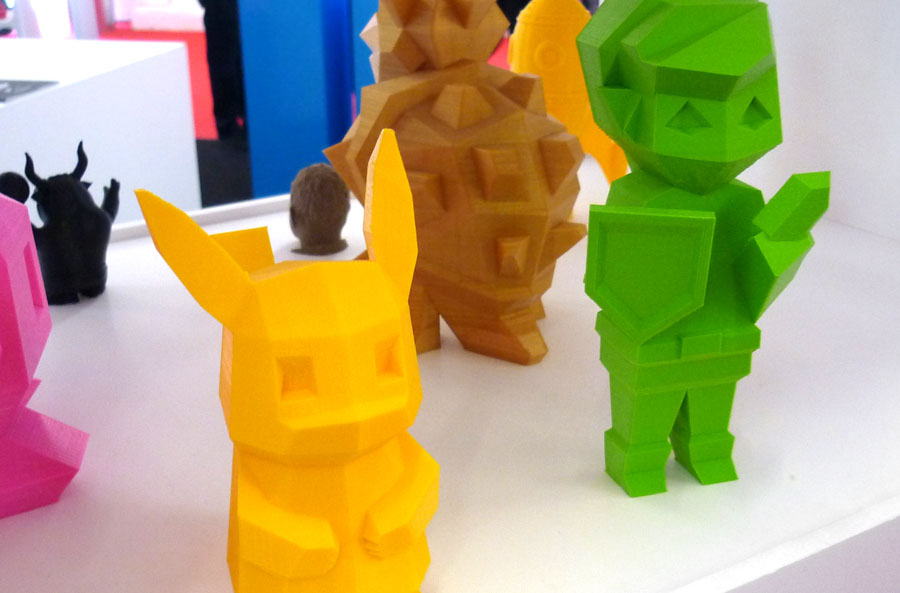This past week saw the 3D Print Show London hit Brick Lane, and it was amazing to see how much, and at times how little, 3D printing has grown recently. The big change is how much the desktop market has developed, with companies like MakerBot and Ultimaker leading the charge. The first generation MakerBot was a ramshackle piece of tech with a brutally laser cut aesthetic. It was a kit for hobbyists who wanted to give it a go, who were prepared to tinker for weeks, or months, before they successfully printed something. MakerBot are now selling 5th generation machines, and they are slick, these are consumer products now and usability is an ever growing concern.

Enter Richard Curtis from Adobe, who delivered a fantastic lecture / demonstration of all the future proofing work Adobe having been putting into Photoshop’s 3D printer compatibility. Having learnt from the trials of postscript 15 years ago there is a real drive within the company to smoothly integrate this emerging technology. What they’ve done so far is phenomenal, particularly the scaffolding and printer profile functions. Following the show we’ve played around with the Photoshop interfaces Richard demoed, and it is as streamlined and intuitive as he made it seem; some master crafted software.

Beyond the growing consumer/user based model there was also some truly innovative use of 3D printing. Alan Faulkner Jones’ 3D printing of live cells (above) is a stand out application of the technology, simply for the potential for medical science. Then there was Alexis Walsh’s printed clothing which I enjoyed for their challenging nature, straddling disciplines of art, fashion and product design. You could see an aesthetic relationship between some of the furniture pieces and her clothing, but the statement of wearing it goes beyond simply living with it to living in it.

The only thing that I found disappointing is that we are still seeing the same old 3D models being printed out: the squids, frogs, castle towers and the seemingly ubiquitous naked female torso (which aren’t being done as Manray inspired pieces, they are purely Freudian). This is more true of the vendors selling the filament (the ink of most 3D printers) than the printer manufacturers, but I feel like the industry needs to push forward together – designers, artists and manufacturers – to demonstrate a dynamic range of possibility – especially for the home market. I think there is a danger the industry might buckle under the weight of creating a consumer end product that then produces little of value. It’s like Betamax vs. VHS, if there is a great library of models then the format will flourish.

This is why the single thing that resonated most with me was a set of geometric games character statues (like Squirtle below). They were all a single, bold colour, designed to work with the technology and just aesthetically pleasing without any pretensions. It was a million miles away from the disturbing scanned and printed people, which just felt gimmicky; the seamlessly articulated objects, impressive but mostly meaningless; or the array of lattice structured vases and lampshades.

So now all I need is a couple of grand spare, so I can print one these fellas.
